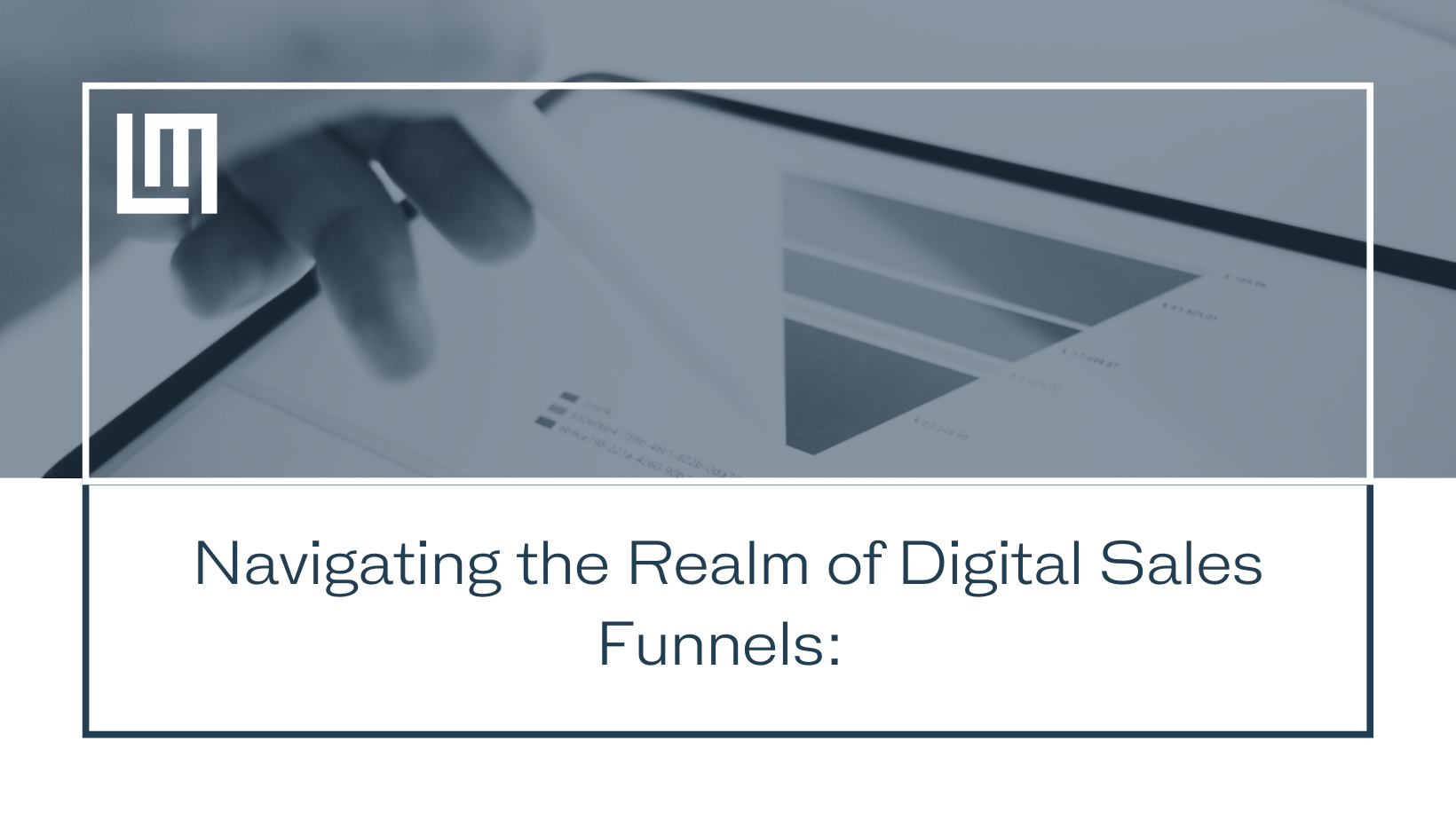Navigating the Realm of Digital Sales Funnels
In the ever-evolving landscape of online commerce, businesses are constantly seeking innovative strategies to connect with their target audience and drive conversions. One of the most powerful tools in the digital marketer's arsenal is the concept of a "sales funnel." Imagine a metaphorical funnel through which potential customers flow, gradually being nurtured and guided towards making a purchase.
In the digital realm, this process is known as a "digital sales funnel," and its strategic implementation can spell the difference between mediocrity and immense success.
Understanding the Digital Sales Funnel
At its core, a digital sales funnel is a step-by-step pathway that a prospect takes from the initial point of contact with your brand to the final conversion, be it a purchase, sign-up, or any other desired action. The funnel is typically divided into several stages, each addressing a different aspect of the customer journey. Let's break down these stages:
Common Reasons for Shopping Cart Abandonment
Awareness: The top of the funnel is all about making potential customers aware of your brand's existence and the value it offers. This is achieved through various means, such as social media, content marketing, search engine optimization (SEO), and paid advertising. The goal here is to cast a wide net and attract as many relevant leads as possible.
Interest: Once a prospect is aware of your brand, it's crucial to capture their interest. This stage involves providing more in-depth information about your products or services through engaging content like blog posts, videos, and webinars. By showcasing your expertise and addressing the pain points of your target audience, you can keep them engaged and eager to learn more.
Consideration: As potential customers become more interested, they enter the consideration stage. Here, you provide them with detailed information about how your offerings can specifically address their needs. This could involve case studies, product comparisons, and customer reviews. The goal is to position your brand as the best solution to their problem.
Decision: In this stage, your prospects are ready to make a decision. This is the ideal time to present compelling offers, discounts, or incentives that encourage them to take action. Elements like free trials, limited-time promotions, and money-back guarantees can help push them towards the final conversion.
Action: The bottom of the funnel is where the conversion happens. This could be a purchase, a subscription, a sign-up, or any other action that aligns with your business goals. Make the process as seamless as possible to minimize any potential friction that could deter prospects from completing the desired action.
Post-Action: The funnel doesn't end at the point of conversion. In fact, the post-action stage is just as important. Engage with your customers after their purchase to ensure their satisfaction, gather feedback, and encourage repeat business. A happy customer can become a loyal advocate for your brand.
Crafting a Successful Digital Sales Funnel
Creating an effective digital sales funnel requires careful planning, strategic thinking, and continuous optimization. Here are some key tips to keep in mind:
Know Your Audience: Understand your target audience's pain points, needs, and preferences. Tailor your content and messaging to resonate with them.
High-quality, valuable content is the backbone of a successful funnel. From blog posts to email campaigns, ensure that your content adds value and guides your audience through each stage.
Seamless User Experience: Make the journey from awareness to conversion as smooth as possible. Your website should be user-friendly, mobile-responsive, and easy to navigate.
Test and Optimize: Continuously monitor your funnel's performance and make data-driven adjustments. A/B testing different elements can help you refine your approach and boost conversion rates.
Personalization: Leverage data to personalize the user experience. Send targeted emails, recommend products based on browsing history, and show that you understand and care about your customers' needs.
Multi-Channel Approach: Utilize a mix of digital channels to reach your audience. Social media, email marketing, SEO, and paid ads can work in synergy to guide prospects through the funnel.
Conclusion:
In the digital age, mastering the art of the digital sales funnel is essential for businesses aiming to thrive in the online marketplace. By strategically guiding potential customers through a series of stages, from awareness to action, you can increase your conversion rates and build lasting customer relationships.
Remember that a successful funnel is built on a foundation of understanding your audience, creating valuable content, providing a seamless user experience, and continuously optimizing based on real-time data. With these principles in mind, you'll be well on your way to unlocking the full potential of digital sales funnels and propelling your business towards success.
Share this post:


